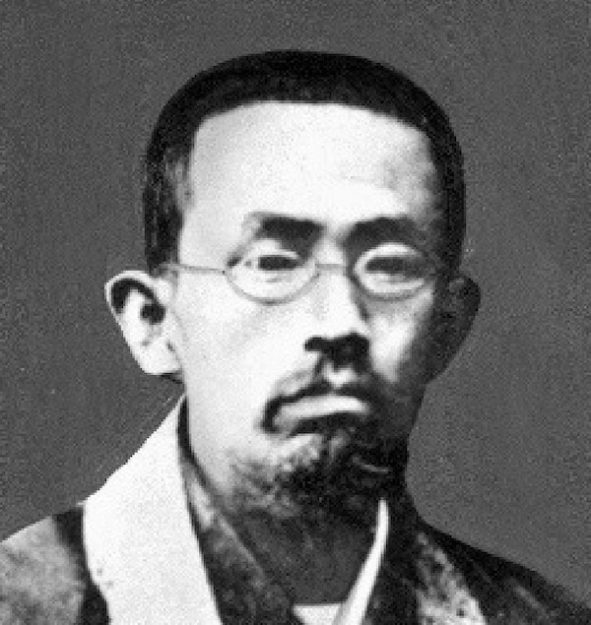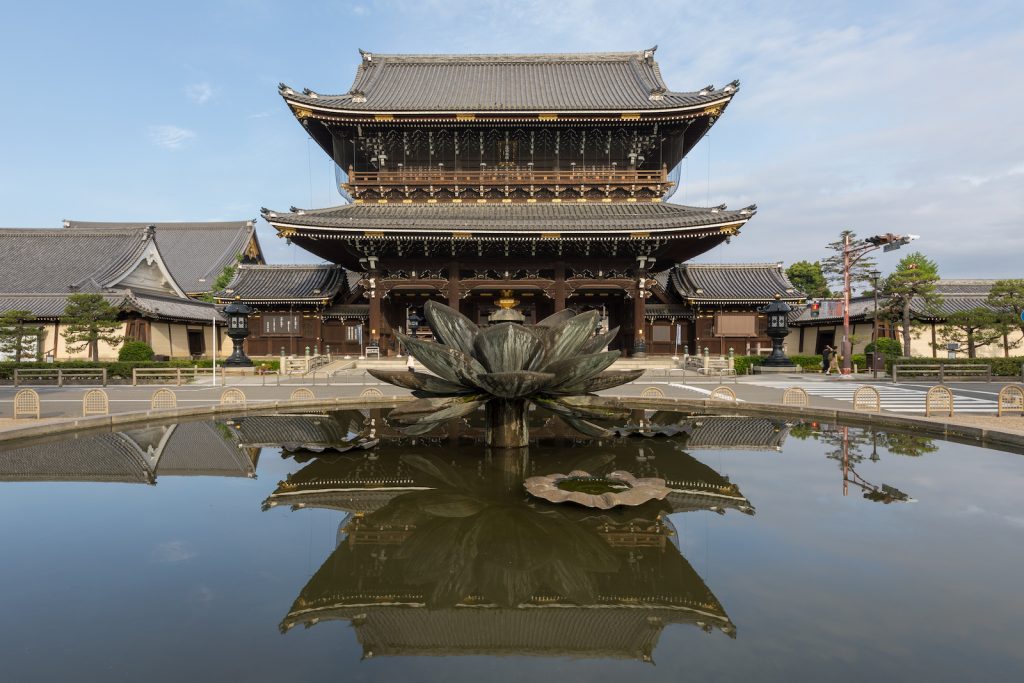What is practice for Buddhists? Depending on your tradition, the answer varies—meditate, chant, become a nun or monk, eat vegetarian, study texts, listen to dharma talks. But how do these activities result in spiritual awakening?
This question is deeply personal. For Kiyozawa Manshi (1863–1903), the priest and Buddhist scholar considered the first modern thinker of the Japanese Pure Land Buddhist tradition of Jodo Shinshu, practice meant diving deeply into his personal subjective experience and interrogating issues surrounding faith.
Born into a poor family during the Meiji Restoration (1868–1912), when Japan transformed from a feudalistic society into a modern economic and political state, Kiyozawa’s initial interest in Buddhism was merely to gain an education. He applied for a scholarship from the Higashi Honganji Buddhist denomination, which enabled him to study Western philosophy at Tokyo Imperial University. He was ordained a priest, and after graduating, he became principal at a Higashi Honganji high school, allowing him to live a luxurious lifestyle. While many men still wore kimono, he dressed in Western-style suits. He smoked Western cigarettes, lived in a Western-style house, and rode to work in a rickshaw. He enjoyed worldly comforts, much like Prince Siddhartha’s life in the palace.
Jodo Shinshu is a Buddhist tradition that doesn’t ask much of its followers or priests regarding lifestyle and practice; think of it as “the people’s Buddhism.” Its founder, Shinran Shonin (1173–1263), was one of the first Japanese priests to marry and raise a family openly. Today, Jodo Shinshu priests look like ordinary laypeople, with heads of hair and everyday clothing. Robes are worn mostly for ceremonies and rituals. Temple members aren’t required to meditate, follow any particular precepts, or do any kind of practice. They are encouraged to attend services and listen to dharma talks, but that’s about it.
After the death of his mother, Kiyozawa turned his attention to spirituality and went through an ascetic period. He shaved his head, wore only priestly robes and wooden geta sandals, left his family, walked everywhere, and visited various temples and teachers. He followed a harsh regimen of meditation and study, adhering to a strict vegetarian diet, which eventually became nothing more than pine resin and needles. Outwardly, he appeared as a prototypical Buddhist priest, and he was very active in trying to reform his Buddhist order.
Similar to Siddhartha’s six years of intense practices, four years of severe asceticism weakened Kiyozawa’s body, and he contracted tuberculosis, forcing him to abandon that path and retreat to his wife’s family temple for rest. He tried to carry out the typical duties of a local temple priest, but members found Kiyozawa’s dharma teachings hard to understand. They were also so bothered by his constant coughing and sickly demeanor that they requested he not visit their homes. He felt utterly useless, describing himself in a journal entry as a “December fan,” referring to the uselessness of a summer fan in winter.
Journal writing anchored what came to be Kiyozawa’s primary form of practice—introspection. Focused on his thoughts, feelings, and actions while examining his motivations and desires with great seriousness and honesty, he analyzed the true nature of the “self” in his journals. Kiyozawa had studied the Agamas, the early discourses of the Buddha, and knew the importance of looking closely at the self. However, his emphasis on subjective experience was also partly a response to the growth of scientific objectivity and observing what can be measured and proven. For Kiyozawa, his subjective experience was the key to objectively understanding his true self.
Kiyozawa reflected on his life unmercifully, documenting his thoughts and feelings and admitting his failures and limitations. He noted days when he coughed up blood, and wrote about his frustrations, disappointments, and sadness. He even admitted thoughts of suicide. He avoided using traditional Buddhist terms and concepts and tried to understand and analyze his thoughts through Western rational thinking and logic. He wanted a fresh approach to Japanese Buddhism, which he felt had become calcified, institutionalized, and tradition-bound over time.
With his body racked by illness, Kiyozawa found solace in the writings of Epictetus, a Stoic philosopher who was born into slavery and suffered a disability because of his harsh past. Epictetus explained how much of life—especially status, wealth, power, and freedom—is beyond one’s control and should not be a source of worry. Admiring his humble nature, Kiyozawa wrote:
“During the night, I coughed blood often. It never ceases now. But it demands only a little restraint on my part; my daily movement is not hampered by it. I even feel some cheer as the result of my illness. Though I have not yet reached Epictetus’ frame of mind, which took joy even in illness, I somehow think that I have made a little progress toward it.”
For Epictetus, peace and liberation are found in one’s thoughts. This rang true to Kiyozawa in light of his failures and ill health, offering a way out.
Kiyozawa also meditated, practicing a form of samatha (calm abiding) meditation that helps quiet the mind. He drew inspiration from the teachings of Shinran, who was exiled and forced to live a lay life. Shinran described himself as neither a priest nor a layman. Shinran’s teachings awakened Kiyozawa to the understanding that all of life is given by a power beyond oneself, which Shinran equated with Amida Buddha. Kiyozawa referred to this as “Tathagata,” one of the titles of the Buddha, which he interpreted as meaning the dynamic power of the universe, encompassing impermanence, interdependence, and oneness.
He became progressively sicker and, in his weakened state, stood at the precipice of death. Reflecting on his life, he felt like a failure in his duties as a priest and in his futile attempts to reform Higashi Honganji by forcing the denomination to focus predominantly on spirituality and away from tradition and ritual. He had felt a deep sense of right and wrong, but now he admitted he knew neither. With all his efforts toward religious reform and spiritual cultivation crushed, Kiyozawa understood that his faith in Tathagata, a universal power beyond self, was all he had left. And his deep faith turned out to be everything.
“We should simply enjoy what has been given to us by the Infinite.”
As he neared the age of 40, Kiyozawa’s wife and two sons died from illness. He became sicker and weaker, and a month before he died, he wrote a short essay called “My Religious Conviction” (Waga Shinnen), which describes the inner peace that Kiyozawa found in his faith. “Without waiting until the world after death,” he wrote, “the Tathagata in which I trust has already given me the greatest happiness in this life.” Kiyozawa felt the power of the universe supporting his life, and therefore, with total abandon, he felt a great sense of peace, free from worry and doubt. In this realization, he found inner strength.
Kiyozawa’s journals record his struggles and progression toward spiritual awakening. He did not reach awakening through logic, scholarly study, philosophical concepts, religious dogma, or following a monastic lifestyle—he came to this understanding through intense and honest introspection, looking inward at what was in his mind. Wasn’t this the process followed by Shakyamuni?
Through introspection, Kiyozawa realized that his power to control life according to his desires was futile. He recognized that his self-centered nature clouded his ability to determine right from wrong and his perception of the world, making both unreliable. Buddhism calls this the error of dualistic thinking, when our minds divide the world into opposites, keeping us from seeing the oneness of life. Through this realization, Kiyozawa felt a great life force, or Tathagata, sustaining and enabling him to live. He felt a deep gratitude toward Tathagata, which he described as his greatest happiness.

Outwardly, his life had not changed—he still was sick and dying—but inwardly, he found profound peace and joy. He had attained the Mahayana Buddhist ideal of spiritual awakening, not by becoming wise and virtuous but by remaining ignorant and foolish. Regarding this awakening, he wrote:
Our true self is nothing but this: committing our total existence to the wondrous working of the Infinite [Tathagata], then settling down just as we are in our present situation.
Once the commitment to the Infinite is made, life and death are no longer of concern: If even life and death are no longer of concern, then surely there is no need to worry about things of lesser importance. Banishment is acceptable. Imprisonment is bearable. Is there anything in slander, rejection, or humiliation that could bother us? No, there is not. Even if we did worry and trouble ourselves about things such as that, we could do nothing about them. So we should simply enjoy what has been given to us by the Infinite.
In Kiyozawa’s life, the path toward understanding his true self was discovered through personal experience and introspection, a practice that people can follow in whatever activity they do. One need not become a nun or monk, become a vegetarian, study intensely, meditate daily, or strive to become a “good” person. Instead, one can follow the path of introspection in living one’s everyday life.
Thank you for subscribing to Tricycle! As a nonprofit, we depend on readers like you to keep Buddhist teachings and practices widely available.
